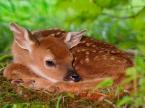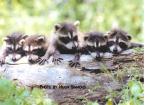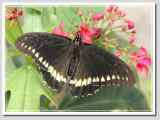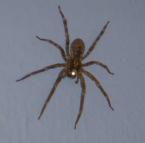Nature this Month: June


June has the most hours of daylight. The sun, now, makes its highest arc through the sky. This is the time when animal and plant growth is at its peak. For many animals, the season of birth and growth is really very short, generally lasting only three or four months. By summer’s end, most babies have become adults and leave their parents to survive on their own. Raccoons, Meadow Voles, Woodchucks, Chipmunks, and Deer who are born in April or May, make their first appearances outside their birth places in June.
If the water temperatures are warm enough, Spotted Salamanders will now be hatching from their eggs. If the queen Bumblebee has set up her new hive, young bees may be out gathering food.

Many insects will hatch in June. These insects can be very useful as an important food for many animals during their summer months. All creatures having three body parts and six legs attached to the middle section, called a thorax, are classified as insects. Most insects have one or two pairs of wings, also attached to the thorax.

A spider in not an insect. It only has two body parts and eight legs. Spiders are in the class Arachnid.

With the sun setting later, it gives us more time to get to listen to the choruses of birds, frogs, and insects.
The June full moon has been called the Hot Moon by some Native American tribes.
June 21, is the First Day of Summer. It is the longest day of the year. On this day the earth in the Northern Hemisphere is tilted closest to the sun. It is also called the Summer Solstice, because this is the time, when the sun at midday reaches its highest position of the year. After this day, the sun will gradually lower its path across the sky and the days will shorten as the earth tilts slowly away from the sun, heading once more toward winter. In Europe, on June 23 and 24, in the far northern countries where winter are long, dark and cold, a holiday called Midsummer’s Eve and Midsummer’s Day are celebrated. The sun, the health of the land, and the arrival of summer are honored with all night celebrations and bonfires.
Begin your summer by taking a camping trip, or go to a nature center. Go for walks and observe the sounds of nature. Learn what the animals that live near you are doing. Sketch in your Nature Journal what you see!
